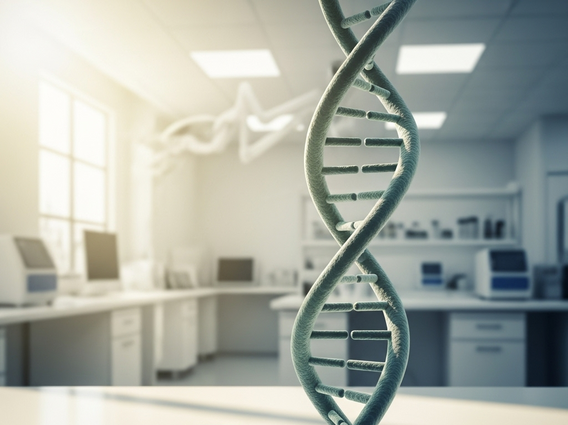Understanding Cancer Risk Factors
Cancer is a complex disease, and while its development can seem unpredictable, a significant portion of cases are linked to identifiable factors. Gaining a clear understanding of these cancer Risk Factors is crucial for prevention, early detection, and ultimately, improving public health outcomes.

Key Takeaways on Cancer Risk Factors
- Many cancer Risk Factors are modifiable lifestyle choices, offering significant prevention opportunities.
- Environmental exposures, from pollutants to radiation, play a role in increasing cancer risk.
- Genetic predisposition can increase susceptibility, but it doesn’t guarantee cancer development.
- Personal assessment and regular health screenings are vital for managing and mitigating risk.
- Effective cancer risk awareness and education empower individuals to make informed choices for prevention.
Common Cancer Risk Factors Explained
Overview of prevalent cancer Risk Factors.
Cancer development is a multi-step process often influenced by a combination of genetic, lifestyle, and environmental elements. While some factors are beyond our control, a substantial number of prevalent cancer Risk Factors are modifiable, meaning individuals can take steps to reduce their exposure and, consequently, their risk. These factors contribute to cellular changes that can lead to uncontrolled growth, the hallmark of cancer.
Recognizing these influences is the first step in a proactive approach to health. From the air we breathe to the food we eat, various elements interact with our bodies, sometimes increasing our vulnerability to disease. This section aims to provide a clear overview of these factors, setting the stage for a deeper dive into specific categories.
Understanding cancer causes and prevention.
A comprehensive approach to health involves not just treating illness but also preventing it. When it comes to cancer, understanding cancer causes and prevention goes hand-in-hand. Prevention strategies often focus on minimizing exposure to known carcinogens and adopting protective behaviors. While not all cancers are preventable, a significant number are, highlighting the power of informed choices and public health initiatives.
Effective prevention involves a combination of individual actions and broader societal efforts to create healthier environments. This includes everything from promoting smoke-free policies to encouraging healthy dietary habits. By focusing on prevention, we can reduce the global burden of cancer and improve quality of life for millions.
The interplay of risk factors.
It’s important to recognize that cancer risk factors rarely act in isolation. Instead, they often interact in complex ways, sometimes amplifying each other’s effects. For instance, a genetic predisposition might be exacerbated by certain lifestyle choices or environmental exposures. This synergistic effect underscores the importance of a holistic approach to risk assessment and mitigation.
- **Modifiable Factors:** These are elements we can change, such as diet, physical activity, smoking, and alcohol consumption.
- **Non-Modifiable Factors:** These include genetics, age, and sometimes gender, which are inherent to an individual.
- **Environmental Factors:** Exposures to pollutants, radiation, and certain chemicals fall into this category.
Lifestyle Choices and Cancer Risk Factors
Diet, physical activity, and cancer risk.
The food we eat and how active we are significantly influence our overall health, including our susceptibility to cancer. A diet rich in fruits, vegetables, and whole grains, coupled with regular physical activity, can help maintain a healthy weight and reduce inflammation, both of which are protective against various cancers. Conversely, diets high in processed foods, red and processed meats, and sugary drinks are associated with increased risk.
Physical activity doesn’t just help manage weight; it also improves immune function, reduces inflammation, and helps regulate hormones, all of which contribute to a lower cancer risk. Aiming for at least 150 minutes of moderate-intensity aerobic activity or 75 minutes of vigorous-intensity activity per week, along with muscle-strengthening activities, is a recommended guideline.
Smoking and alcohol as cancer Risk Factors.
Tobacco use remains the leading preventable cause of cancer and death from cancer. Smoking, in any form, introduces a cocktail of carcinogens into the body, directly damaging DNA and leading to cancers of the lung, mouth, throat, esophagus, bladder, and many others. Even secondhand smoke poses a significant risk. Similarly, alcohol consumption is a known carcinogen, increasing the risk for cancers of the mouth, throat, esophagus, liver, breast, and colon. The risk increases with the amount of alcohol consumed.
Obesity’s impact on cancer risk.
Obesity is a growing global health concern and a significant contributor to several types of cancer. Excess body fat can lead to chronic inflammation, insulin resistance, and altered hormone levels (such as estrogen and insulin-like growth factors), all of which can promote cancer cell growth. Cancers linked to obesity include those of the esophagus, breast (post-menopause), colon and rectum, uterus, kidney, and pancreas, among others. Managing weight through a balanced diet and regular exercise is a powerful strategy for reducing cancer risk.
Making informed lifestyle choices and cancer risk reduction.
Empowering individuals to make informed lifestyle choices and cancer risk reduction is a cornerstone of public health. Understanding the direct links between daily habits and cancer development provides a strong motivation for change. Small, consistent adjustments can lead to significant long-term benefits.
Here are key lifestyle changes that can reduce cancer risk:
- Quit Smoking: This is the single most impactful step to reduce cancer risk.
- Limit Alcohol: Reduce or eliminate alcohol consumption.
- Maintain a Healthy Weight: Balance calorie intake with physical activity.
- Eat a Balanced Diet: Focus on plant-based foods, lean proteins, and whole grains.
- Be Physically Active: Incorporate regular exercise into your routine.
- Protect Skin from Sun: Use sunscreen and seek shade to prevent skin cancer.
| Lifestyle Factor | Impact on Cancer Risk | Associated Cancers (Examples) |
|---|---|---|
| Smoking | Significantly Increases | Lung, Mouth, Throat, Esophagus, Bladder |
| Alcohol Consumption | Increases | Mouth, Throat, Esophagus, Liver, Breast, Colon |
| Obesity | Increases | Esophagus, Breast (post-menopause), Colon, Uterus, Kidney |
| Poor Diet (Processed foods, red meat) | Increases | Colon, Stomach, Pancreas |
| Physical Inactivity | Increases | Colon, Breast, Endometrial |
Environmental Cancer Risk Factors
Exposure to pollutants and cancer risk.
Our environment plays a significant role in our health, and exposure to various pollutants can increase cancer risk. Air pollution, both outdoor (from vehicle emissions, industrial processes) and indoor (from radon, secondhand smoke, cooking fumes), contains fine particulate matter and toxic gases that can damage DNA and promote cancer growth. Certain industrial chemicals, such as asbestos, benzene, and formaldehyde, are well-established carcinogens that can be encountered in specific workplaces or older buildings.
Minimizing exposure to these harmful substances is a critical component of cancer prevention. This might involve advocating for cleaner air policies, ensuring proper ventilation in homes and workplaces, and adhering to safety protocols when handling hazardous materials.
Chemicals and radiation as cancer Risk Factors.
Beyond general pollutants, specific chemicals and types of radiation are potent environmental factors for cancer risk. Radon, a naturally occurring radioactive gas found in soil and rocks, can seep into homes and is a leading cause of lung cancer among non-smokers. Ultraviolet (UV) radiation from the sun or tanning beds is the primary cause of skin cancers, including melanoma, basal cell carcinoma, and squamous cell carcinoma.
Ionizing radiation, used in medical imaging (like X-rays and CT scans) and radiation therapy, can also increase cancer risk, though the benefits of these procedures often outweigh the small potential risks. It’s essential to use such medical procedures judiciously and ensure proper shielding. Understanding and mitigating these specific exposures are key to reducing environmentally-induced cancers.
Workplace and home exposures.
Many individuals face unique environmental cancer risk factors in their workplaces or even within their homes. Occupational hazards can include exposure to specific chemicals, heavy metals, or radiation for those in certain industries. For example, painters, construction workers, and agricultural workers may encounter different sets of carcinogens.
- Asbestos: Found in older insulation, building materials; linked to mesothelioma and lung cancer.
- Radon: Naturally occurring radioactive gas; leading cause of lung cancer in non-smokers.
- Benzene: Used in chemical manufacturing; linked to leukemia.
- Formaldehyde: Used in building materials, household products; linked to nasopharyngeal cancer.
- Pesticides: Some types are associated with increased risk of certain cancers, like non-Hodgkin lymphoma.
- UV Radiation: From sunlight and tanning beds; primary cause of skin cancers.
At home, factors like poor ventilation, certain cleaning products, and even some consumer goods can contribute to exposure. Being aware of these potential sources and taking steps to reduce exposure, such as using protective gear or choosing safer alternatives, is crucial.
Genetic Predisposition to Cancer Risk Factors
Genetic predisposition to cancer explained.
While many cancers arise from random mutations or environmental exposures, some individuals inherit genetic mutations that significantly increase their lifetime risk. This is known as genetic predisposition to cancer explained. These inherited mutations are typically found in genes responsible for DNA repair, cell growth regulation, or tumor suppression. When these genes don’t function correctly, cells are more likely to accumulate further mutations that can lead to cancer.
It’s important to understand that a genetic predisposition does not mean cancer is inevitable. It simply means an individual has a higher baseline risk compared to the general population. Other factors, including lifestyle and environmental exposures, still play a crucial role in whether cancer develops.
Family history and inherited cancer risk.
A strong family history of cancer can be a key indicator of an inherited cancer risk. If multiple close relatives (parents, siblings, children) on the same side of the family have been diagnosed with the same type of cancer, or if cancers occurred at unusually young ages, it suggests a potential genetic link. Common examples include inherited mutations in the BRCA1 and BRCA2 genes, which significantly increase the risk of breast and ovarian cancers, or mutations in genes associated with Lynch syndrome, which elevates the risk of colorectal and uterine cancers.
Discussing your family’s health history with your doctor is a vital step in assessing your personal risk. This information can guide decisions about screening, prevention strategies, and whether genetic counseling or testing might be appropriate.
Genetic counseling and testing.
For individuals with a significant family history or other indicators of genetic predisposition, genetic counseling and testing can provide valuable insights. Genetic counselors are healthcare professionals who can assess an individual’s risk, explain the implications of genetic testing, and help interpret results. Genetic testing involves analyzing DNA for specific mutations known to increase cancer risk.
- BRCA1/BRCA2: Associated with increased risk of breast, ovarian, prostate, and pancreatic cancers.
- MLH1, MSH2, MSH6, PMS2 (Lynch Syndrome): Associated with increased risk of colorectal, endometrial, and other cancers.
- TP53 (Li-Fraumeni Syndrome): Associated with increased risk of sarcomas, breast cancer, brain tumors, and leukemia.
- CDH1: Associated with increased risk of hereditary diffuse gastric cancer and lobular breast cancer.
The decision to undergo genetic testing is a personal one, with potential benefits including early detection and targeted prevention, but also considerations regarding emotional impact and privacy.
How to Assess Cancer Risk Factors
Personal assessment of cancer risk.
Understanding your personal cancer risk factors is a proactive step towards prevention and early detection. This assessment typically begins with a thorough review of your medical history, family history, and lifestyle habits by a healthcare professional. They will consider your age, gender, ethnicity, and any pre-existing medical conditions that might influence your risk profile. Tools like risk assessment questionnaires can help identify areas of concern, prompting further discussion and potential interventions.
It’s about gathering a comprehensive picture of your unique situation to determine how to assess cancer risk most effectively for you. This personalized approach ensures that recommendations for screening and prevention are tailored to your specific needs, rather than a one-size-fits-all strategy.
Mitigating identified cancer Risk Factors.
Once specific cancer Risk Factors have been identified, the next crucial step is to develop a strategy for mitigation. This often involves a combination of lifestyle modifications, regular medical screenings, and, in some cases, chemoprevention or prophylactic surgery for individuals at very high genetic risk. For instance, if smoking is identified as a factor, cessation programs would be recommended. If obesity is a concern, dietary changes and increased physical activity would be advised.
Early detection through recommended screenings (e.g., mammograms, colonoscopies, Pap tests) is also a powerful mitigation strategy, as it allows for the diagnosis and treatment of cancer at its most curable stages. Working closely with your healthcare team to create a personalized risk reduction plan is essential.
The role of regular check-ups.
Regular medical check-ups are fundamental to both assessing and mitigating cancer risk factors. These routine visits provide an opportunity for your doctor to monitor your overall health, discuss any new symptoms or concerns, update your family history, and ensure you are up-to-date on recommended screenings. They can also offer guidance on lifestyle modifications and provide referrals to specialists if needed.
- **Annual Physicals:** Essential for general health monitoring and discussing risk factors.
- **Screening Tests:** Tailored based on age, gender, and risk profile (e.g., mammography, colonoscopy, Pap test, skin checks).
- **Blood Tests:** Can sometimes indicate general health issues or specific markers.
- **Discussion of Lifestyle:** Opportunity to review diet, exercise, smoking, and alcohol habits.
- **Family History Updates:** Important for identifying emerging genetic risks.
These ongoing interactions with healthcare providers ensure that your risk assessment remains current and that any necessary interventions are implemented promptly.
Cancer Risk Awareness and Education
Promoting cancer risk awareness and education.
Effective public health initiatives hinge on promoting cancer risk awareness and education. When individuals are informed about the factors that contribute to cancer, they are better equipped to make choices that protect their health. This involves disseminating accurate, accessible information through various channels, including public health campaigns, community programs, and educational materials in schools and workplaces.
The goal is to demystify cancer, highlight preventable causes, and encourage proactive health behaviors. By fostering a culture of awareness, communities can collectively work towards reducing the incidence of preventable cancers and supporting those affected by the disease.
Empowering prevention through knowledge.
Knowledge is power, especially when it comes to health. Empowering prevention through knowledge means providing individuals with the tools and understanding they need to take control of their cancer risk. This includes not only knowing what the risk factors are but also understanding how to mitigate them through lifestyle changes, regular screenings, and informed discussions with healthcare providers. When people feel informed and supported, they are more likely to adopt healthier habits and seek timely medical care.
Educational efforts should also address common misconceptions about cancer and provide clear, evidence-based guidance. This helps individuals navigate the vast amount of health information available and make decisions that are truly beneficial for their long-term well-being.
Community involvement and resources.
Community involvement is crucial for reinforcing cancer risk awareness and education. Local health departments, non-profit organizations, and healthcare systems often provide valuable resources, support groups, and screening programs. These community-based initiatives can reach diverse populations, address specific local needs, and offer practical assistance for individuals looking to reduce their cancer risk.
- **Public Health Campaigns:** Mass media campaigns to raise awareness about specific risk factors (e.g., anti-smoking campaigns).
- **Educational Workshops:** Community-based sessions on healthy eating, physical activity, and cancer screening.
- **Online Resources:** Reputable websites from health organizations offering detailed information and tools.
- **Support Groups:** For individuals and families affected by cancer, offering emotional and practical support.
- **Screening Programs:** Accessible and affordable screening services for early detection.
By leveraging these resources, individuals can find the support and information they need to make informed decisions and contribute to a healthier community.
Frequently Asked Questions About Cancer Risk Factors
Can I get cancer even if I have no known risk factors?
Yes, it is possible to develop cancer even without any identifiable risk factors. While many cancers are linked to specific genetic, lifestyle, or environmental influences, some arise from random mutations that occur during normal cell division. These sporadic mutations can happen to anyone, regardless of their health habits or family history.
This highlights the complex nature of cancer and why ongoing research is so vital. While reducing known risk factors significantly lowers your chances, it doesn’t eliminate them entirely. Regular health check-ups and screenings remain important for everyone.
Are all cancer risk factors equally dangerous?
No, not all cancer risk factors carry the same weight or level of danger. Some factors, like smoking, are extremely potent and significantly increase the risk for multiple types of cancer. Others, such as certain genetic predispositions, might increase risk by a smaller but still significant margin.
The impact of a risk factor can also depend on its duration and intensity of exposure, as well as an individual’s unique genetic makeup. Healthcare professionals can help assess the relative importance of different risk factors in your personal profile.
How quickly can lifestyle changes reduce my cancer risk?
The timeline for cancer risk reduction through lifestyle changes can vary depending on the specific factor and type of cancer. For instance, quitting smoking immediately begins to lower your risk, with significant reductions seen within a few years, though it can take decades to reach the risk level of someone who never smoked.
Adopting a healthy diet and increasing physical activity can start to have positive effects on inflammation, hormone levels, and weight relatively quickly, contributing to a gradual, long-term reduction in risk. Consistency is key for sustained benefits.
Is there a difference between a risk factor and a cause of cancer?
Yes, there is a subtle but important distinction. A cancer risk factor is anything that increases your chance of getting cancer. It’s a correlation, meaning people with the factor are more likely to develop cancer than those without it. A cause, on the other hand, is something that directly leads to cancer development.
While some risk factors are direct causes (e.g., the carcinogens in tobacco smoke directly damage DNA), many are not. For example, obesity is a risk factor because it creates an environment in the body that promotes cancer, but it doesn’t directly cause the initial mutation. Most cancers result from a combination of multiple risk factors and genetic changes over time.





